
Bundle: Chemistry: An Atoms First Approach, 2nd, Loose-Leaf + OWLv2, 4 terms (24 months) Printed Access Card
2nd Edition
ISBN: 9781305717633
Author: Steven S. Zumdahl, Susan A. Zumdahl
Publisher: Cengage Learning
expand_more
expand_more
format_list_bulleted
Concept explainers
Textbook Question
Chapter 4, Problem 29E
State whether or not each of the following has a permanent dipole moment.
a. 
b. 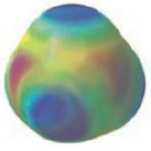
c. 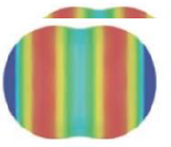
d. 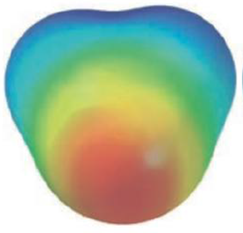
e. 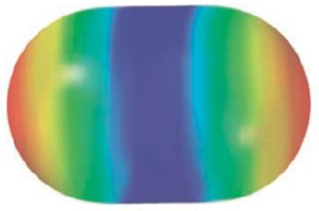
f. 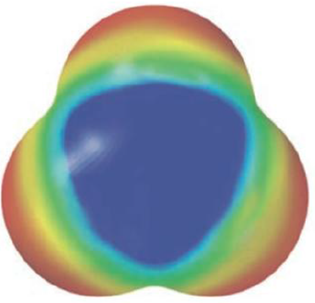
Expert Solution & Answer
Want to see the full answer?
Check out a sample textbook solution
Students have asked these similar questions
complete the recations below dont need the mechanism.
complete the recation below dont need the mechanism.
Rank each set of substituents using the Cahn-Ingold-Prelog sequence rules bynumbering the highest priority 1 and the lowest priority 4.
Chapter 4 Solutions
Bundle: Chemistry: An Atoms First Approach, 2nd, Loose-Leaf + OWLv2, 4 terms (24 months) Printed Access Card
Ch. 4 - Explain the main postulate of the VSEPR model....Ch. 4 - Explain why CF4 and Xef4 are nonpolar compounds...Ch. 4 - Consider the following compounds: CO2, SO2, KrF2,...Ch. 4 - Prob. 4RQCh. 4 - What hybridization is required for central atoms...Ch. 4 - Prob. 6RQCh. 4 - Prob. 7RQCh. 4 - What are molecular orbitals? How do they compare...Ch. 4 - Explain the difference between the and MOs for...Ch. 4 - Prob. 3ALQ
Ch. 4 - Which of the following would you expect to be more...Ch. 4 - Arrange the following molecules from most to least...Ch. 4 - Which is the more correct statement: The methane...Ch. 4 - Prob. 7ALQCh. 4 - Prob. 8ALQCh. 4 - Which of the following statements is/are true?...Ch. 4 - Give one example of a compound having a linear...Ch. 4 - In the hybrid orbital model, compare and contrast ...Ch. 4 - Prob. 13QCh. 4 - Prob. 14QCh. 4 - Prob. 15QCh. 4 - Prob. 16QCh. 4 - Compare and contrast bonding molecular orbitals...Ch. 4 - Prob. 18QCh. 4 - Why does the molecular orbital model do a better...Ch. 4 - The three NO bonds in NO3 are all equivalent in...Ch. 4 - Predict the molecular structure (including bond...Ch. 4 - Predict the molecular structure (including bond...Ch. 4 - Predict the molecular structure and bond angles...Ch. 4 - Prob. 24ECh. 4 - Prob. 25ECh. 4 - Two variations of the octahedral geometry (see...Ch. 4 - Predict the molecular structure (including bond...Ch. 4 - Predict the molecular structure (including bond...Ch. 4 - State whether or not each of the following has a...Ch. 4 - The following electrostatic potential diagrams...Ch. 4 - Which of the molecules in Exercises 21 and 22 have...Ch. 4 - Which of the molecules in Exercises 27 and 28 have...Ch. 4 - Write Lewis structures and predict the molecular...Ch. 4 - Write Lewis structures and predict whether each of...Ch. 4 - Consider the following Lewis structure where E is...Ch. 4 - Consider the following Lewis structure where E is...Ch. 4 - The molecules BF3, CF4, CO2, PF5, and SF6 are all...Ch. 4 - Two different compounds have the formula XeF2Cl2....Ch. 4 - Use the localized electron model to describe the...Ch. 4 - Use the localized electron model to describe the...Ch. 4 - Use the localized electron model to describe the...Ch. 4 - Use the localized electron model to describe the...Ch. 4 - The space-filling models of ethane and ethanol are...Ch. 4 - The space-filling models of hydrogen cyanide and...Ch. 4 - Prob. 45ECh. 4 - Prob. 46ECh. 4 - Prob. 47ECh. 4 - Give the expected hybridization of the central...Ch. 4 - For each of the following molecules, write the...Ch. 4 - For each of the following molecules or ions that...Ch. 4 - Prob. 51ECh. 4 - The allene molecule has the following Lewis...Ch. 4 - Indigo is the dye used in coloring blue jeans. The...Ch. 4 - Prob. 54ECh. 4 - Prob. 55ECh. 4 - Many important compounds in the chemical industry...Ch. 4 - Two molecules used in the polymer industry are...Ch. 4 - Hot and spicy foods contain molecules that...Ch. 4 - One of the first drugs to be approved for use in...Ch. 4 - The antibiotic thiarubin-A was discovered by...Ch. 4 - Prob. 61ECh. 4 - Sketch the molecular orbital and label its type (...Ch. 4 - Prob. 63ECh. 4 - Which of the following are predicted by the...Ch. 4 - Prob. 65ECh. 4 - Prob. 66ECh. 4 - Prob. 67ECh. 4 - Using the molecular orbital model to describe the...Ch. 4 - Prob. 69ECh. 4 - A Lewis structure obeying the octet rule can be...Ch. 4 - Using the molecular orbital model, write electron...Ch. 4 - Using the molecular orbital model, write electron...Ch. 4 - In which of the following diatomic molecules would...Ch. 4 - In terms of the molecular orbital model, which...Ch. 4 - Prob. 75ECh. 4 - Show how a hydrogen 1s atomic orbital and a...Ch. 4 - Use Figs. 4-54 and 4-55 to answer the following...Ch. 4 - The diatomic molecule OH exists in the gas phase....Ch. 4 - Prob. 79ECh. 4 - Describe the bonding in NO+, NO, and NO, using...Ch. 4 - Describe the bonding in the O3 molecule and the...Ch. 4 - Prob. 82ECh. 4 - Prob. 83AECh. 4 - Vitamin B6 is an organic compound whose deficiency...Ch. 4 - Two structures can be drawn for cyanuric acid: a....Ch. 4 - Prob. 86AECh. 4 - What do each of the following sets of...Ch. 4 - Aspartame is an artificial sweetener marketed...Ch. 4 - Prob. 89AECh. 4 - The three most stable oxides of carbon are carbon...Ch. 4 - Prob. 91AECh. 4 - Which of the following molecules have net dipole...Ch. 4 - The strucrure of TeF5 is Draw a complete Lewis...Ch. 4 - Complete the following resonance structures for...Ch. 4 - Prob. 95AECh. 4 - Describe the bonding in the first excited state of...Ch. 4 - Using an MO energy-level diagram, would you expect...Ch. 4 - Show how a dxz. atomic orbital and a pz, atomic...Ch. 4 - What type of molecular orbital would result from...Ch. 4 - Consider three molecules: A, B, and C. Molecule A...Ch. 4 - Prob. 101CWPCh. 4 - Predict the molecular structure, bond angles, and...Ch. 4 - Draw the Lewis structures for SO2, PCl3, NNO, COS,...Ch. 4 - Draw the Lewis structures for TeCl4, ICl5, PCl5,...Ch. 4 - A variety of chlorine oxide fluorides and related...Ch. 4 - Pelargondin is the molecule responsible for the...Ch. 4 - Complete a Lewis structure for the compound shown...Ch. 4 - Prob. 108CWPCh. 4 - Consider the molecular orbital electron...Ch. 4 - Place the species B2+ , B2, and B2 in order of...Ch. 4 - The compound NF3 is quite stable, but NCl3 is very...Ch. 4 - Predict the molecular structure for each of the...Ch. 4 - Prob. 113CPCh. 4 - Cholesterol (C27liu;O) has the following...Ch. 4 - Cyanamide (H2NCN), an important industrial...Ch. 4 - As compared with CO and O2, CS and S2 are very...Ch. 4 - Prob. 117CPCh. 4 - Use the MO model to explain the bonding in BeH2....Ch. 4 - Prob. 119CPCh. 4 - Arrange the following from lowest to highest...Ch. 4 - Prob. 121CPCh. 4 - Prob. 122CPCh. 4 - Carbon monoxide (CO) forms bonds to a variety of...Ch. 4 - The space-filling model for benzoic acid, a food...Ch. 4 - As the bead engineer of your starship in charge of...Ch. 4 - A flask containing gaseous N2 is irradiated with...Ch. 4 - Determine the molecular structure and...
Knowledge Booster
Learn more about
Need a deep-dive on the concept behind this application? Look no further. Learn more about this topic, chemistry and related others by exploring similar questions and additional content below.Similar questions
- (c) (4pts) Mechanism: heat (E1) CH3OH + 1.5pts each _E1 _ (1pt) Br CH3OH (d) (4pts) Mechanism: SN1 (1pt) (e) (3pts) 1111 I H 10 Ill!! H LDA THF (solvent) Mechanism: E2 (1pt) NC (f) Bri!!!!! CH3 NaCN (3pts) acetone Mechanism: SN2 (1pt) (SN1) -OCH3 OCH3 1.5pts each 2pts for either product 1pt if incorrect stereochemistry H Br (g) “,、 (3pts) H CH3OH +21 Mechanism: SN2 (1pt) H CH3 2pts 1pt if incorrect stereochemistry H 2pts 1pt if incorrect stereochemistryarrow_forwardA mixture of butyl acrylate and 4'-chloropropiophenone has been taken for proton NMR analysis. Based on this proton NMR, determine the relative percentage of each compound in the mixturearrow_forwardQ5: Label each chiral carbon in the following molecules as R or S. Make sure the stereocenter to which each of your R/S assignments belong is perfectly clear to the grader. (8pts) R OCH 3 CI H S 2pts for each R/S HO R H !!! I OH CI HN CI R Harrow_forward
- Calculate the proton and carbon chemical shifts for this structurearrow_forwardA. B. b. Now consider the two bicyclic molecules A. and B. Note that A. is a dianion and B. is a neutral molecule. One of these molecules is a highly reactive compound first characterized in frozen noble gas matrices, that self-reacts rapidly at temperatures above liquid nitrogen temperature. The other compound was isolated at room temperature in the early 1960s, and is a stable ligand used in organometallic chemistry. Which molecule is the more stable molecule, and why?arrow_forwardWhere are the chiral centers in this molecule? Also is this compound meso yes or no?arrow_forward
- PLEASE HELP! URGENT!arrow_forwardWhere are the chiral centers in this molecule? Also is this compound meso yes or no?arrow_forwardA mixture of C7H12O2, C9H9OCl, biphenyl and acetone was put together in a gas chromatography tube. Please decide from the GC resutls which correspond to the peak for C7,C9 and biphenyl and explain the reasoning based on GC results. Eliminate unnecessary peaks from Gas Chromatography results.arrow_forward
arrow_back_ios
SEE MORE QUESTIONS
arrow_forward_ios
Recommended textbooks for you
 World of Chemistry, 3rd editionChemistryISBN:9781133109655Author:Steven S. Zumdahl, Susan L. Zumdahl, Donald J. DeCostePublisher:Brooks / Cole / Cengage Learning
World of Chemistry, 3rd editionChemistryISBN:9781133109655Author:Steven S. Zumdahl, Susan L. Zumdahl, Donald J. DeCostePublisher:Brooks / Cole / Cengage Learning Introductory Chemistry: A FoundationChemistryISBN:9781337399425Author:Steven S. Zumdahl, Donald J. DeCostePublisher:Cengage Learning
Introductory Chemistry: A FoundationChemistryISBN:9781337399425Author:Steven S. Zumdahl, Donald J. DeCostePublisher:Cengage Learning
 ChemistryChemistryISBN:9781305957404Author:Steven S. Zumdahl, Susan A. Zumdahl, Donald J. DeCostePublisher:Cengage Learning
ChemistryChemistryISBN:9781305957404Author:Steven S. Zumdahl, Susan A. Zumdahl, Donald J. DeCostePublisher:Cengage Learning Chemistry by OpenStax (2015-05-04)ChemistryISBN:9781938168390Author:Klaus Theopold, Richard H Langley, Paul Flowers, William R. Robinson, Mark BlaserPublisher:OpenStax
Chemistry by OpenStax (2015-05-04)ChemistryISBN:9781938168390Author:Klaus Theopold, Richard H Langley, Paul Flowers, William R. Robinson, Mark BlaserPublisher:OpenStax Organic Chemistry: A Guided InquiryChemistryISBN:9780618974122Author:Andrei StraumanisPublisher:Cengage Learning
Organic Chemistry: A Guided InquiryChemistryISBN:9780618974122Author:Andrei StraumanisPublisher:Cengage Learning

World of Chemistry, 3rd edition
Chemistry
ISBN:9781133109655
Author:Steven S. Zumdahl, Susan L. Zumdahl, Donald J. DeCoste
Publisher:Brooks / Cole / Cengage Learning

Introductory Chemistry: A Foundation
Chemistry
ISBN:9781337399425
Author:Steven S. Zumdahl, Donald J. DeCoste
Publisher:Cengage Learning


Chemistry
Chemistry
ISBN:9781305957404
Author:Steven S. Zumdahl, Susan A. Zumdahl, Donald J. DeCoste
Publisher:Cengage Learning

Chemistry by OpenStax (2015-05-04)
Chemistry
ISBN:9781938168390
Author:Klaus Theopold, Richard H Langley, Paul Flowers, William R. Robinson, Mark Blaser
Publisher:OpenStax

Organic Chemistry: A Guided Inquiry
Chemistry
ISBN:9780618974122
Author:Andrei Straumanis
Publisher:Cengage Learning
Stoichiometry - Chemistry for Massive Creatures: Crash Course Chemistry #6; Author: Crash Course;https://www.youtube.com/watch?v=UL1jmJaUkaQ;License: Standard YouTube License, CC-BY
Bonding (Ionic, Covalent & Metallic) - GCSE Chemistry; Author: Science Shorts;https://www.youtube.com/watch?v=p9MA6Od-zBA;License: Standard YouTube License, CC-BY
General Chemistry 1A. Lecture 12. Two Theories of Bonding.; Author: UCI Open;https://www.youtube.com/watch?v=dLTlL9Z1bh0;License: CC-BY